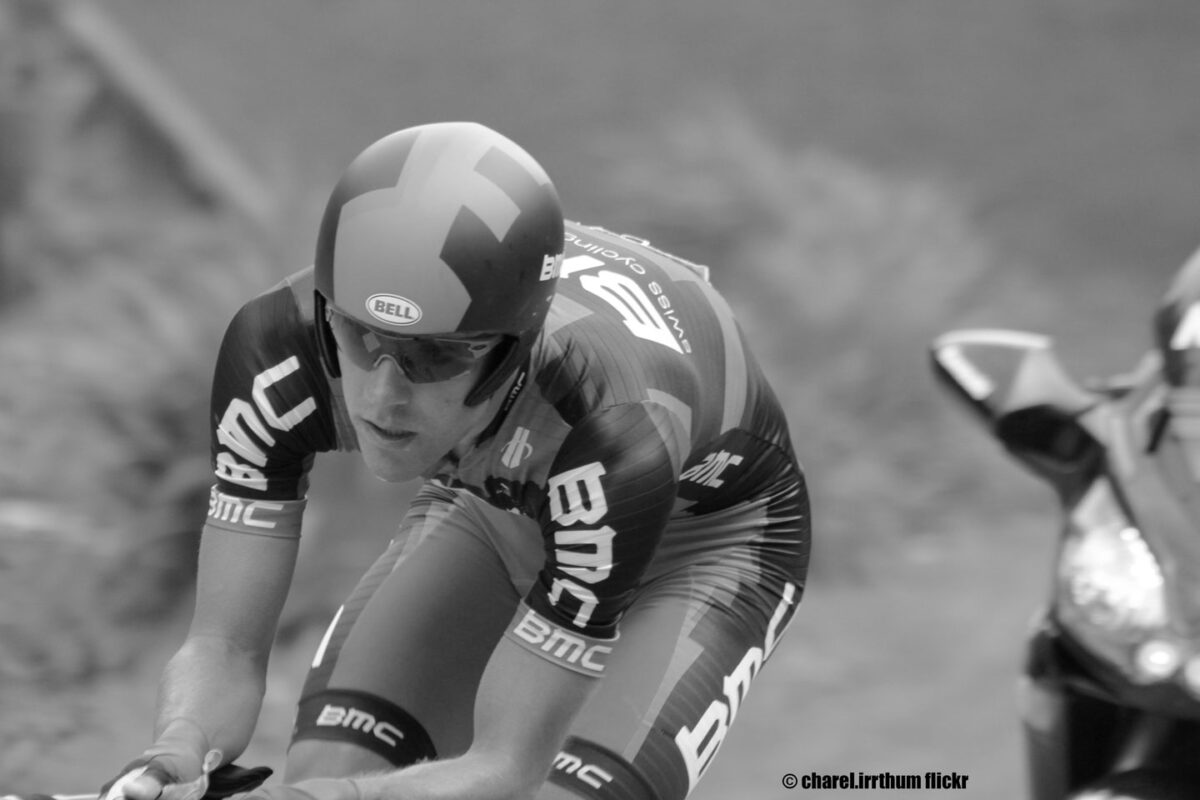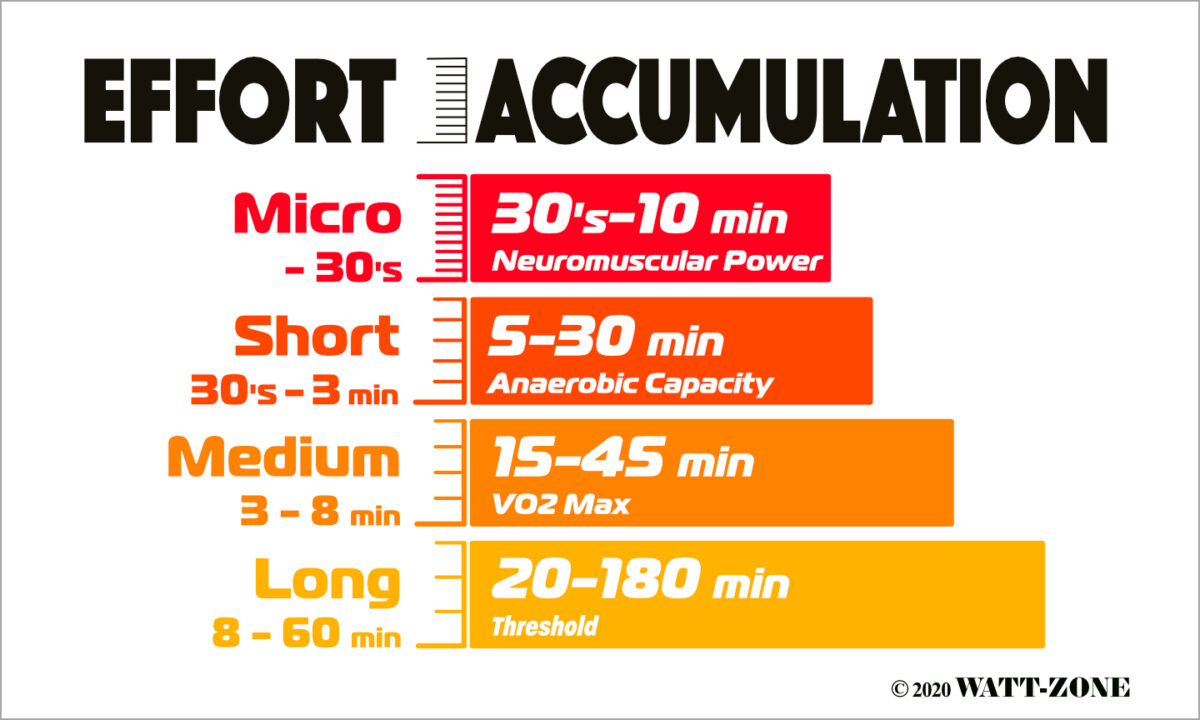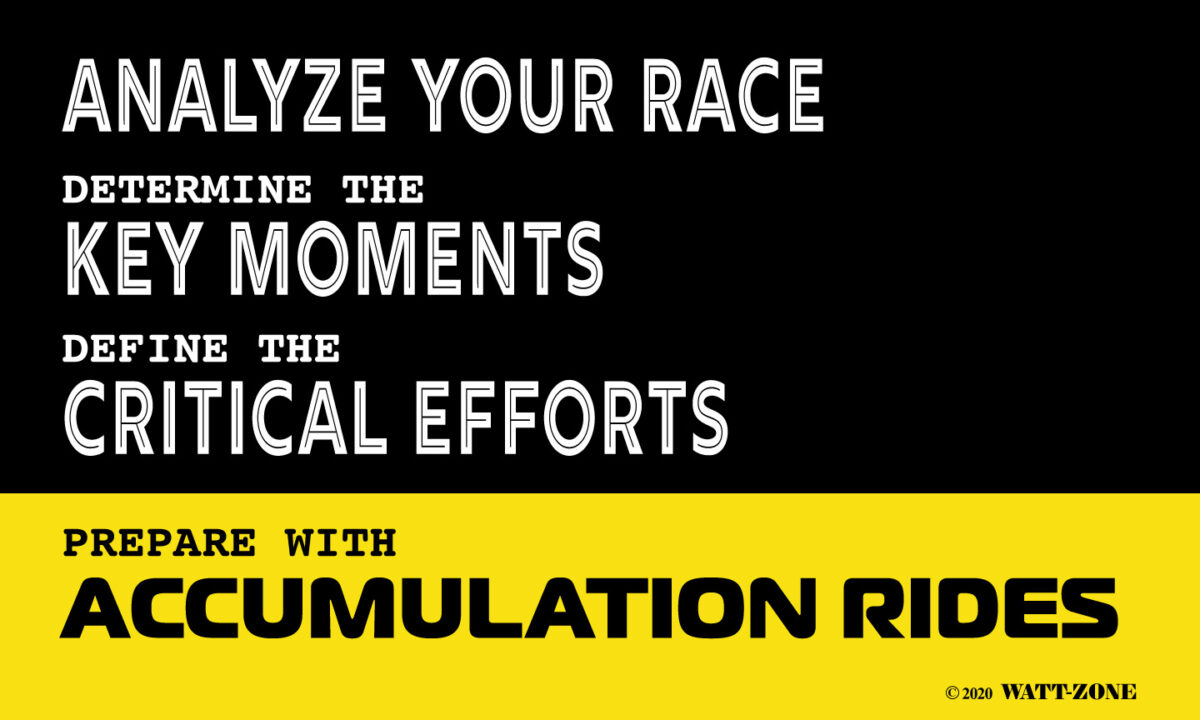Critical Efforts are key moments in a race that determine the outcome. For a cyclist to win or perform well, they must analyze races ahead of time and determine what the key moments will be. These key moments require Critical Efforts – the performance needed by a cyclists expressed by effort and duration.”
The simplest type of race to analyze is the time trial. If you compete in a 20km dead flat time trial, the key moment is the entire time trial. You need to perform a maximal effort for the duration of the time trial, lets say 30 minutes. This is a 30-minute Critical Effort.

If you are going to train for such a time trial, and it is a major goal, it makes sense to do a block of training where Accumulation Rides focus on Effort Durations similar to the Critical Effort. Push/Pull style training should be incorporated around the Critical Effort Duration, in this case Long Efforts, between 8 and 60 minutes.

If we look at a road race that’s predominantly flat with the exception of a small hill, 5km from the finish, it can be reasonably predicted that the race will explode once it reaches the small hill. The hill is the key moment in the race, and some research on Strava shows it is a 5-minute Critical Effort.
So to train for this race, it makes sense to do Accumulation Rides focusing Push/Pull training around 5-minute Effort Durations. In this case Medium Efforts, between 3 and 8 minutes.
Cyclists always wonder what the best intervals to do are? Whilst cyclists should do Accumulation training for key physiological parameters, if a goal event has very special key moments, it makes sense to train specifically for these. .

On the next page the Critical Efforts made by Julian Alaphilippe during Milan San Remo are analyzed.
